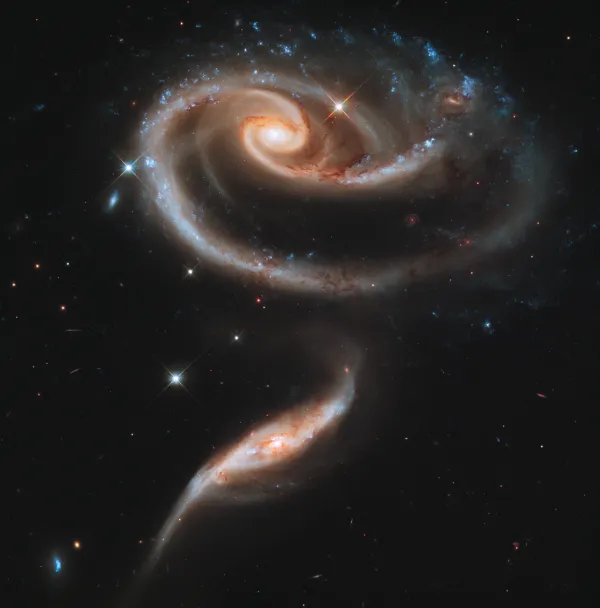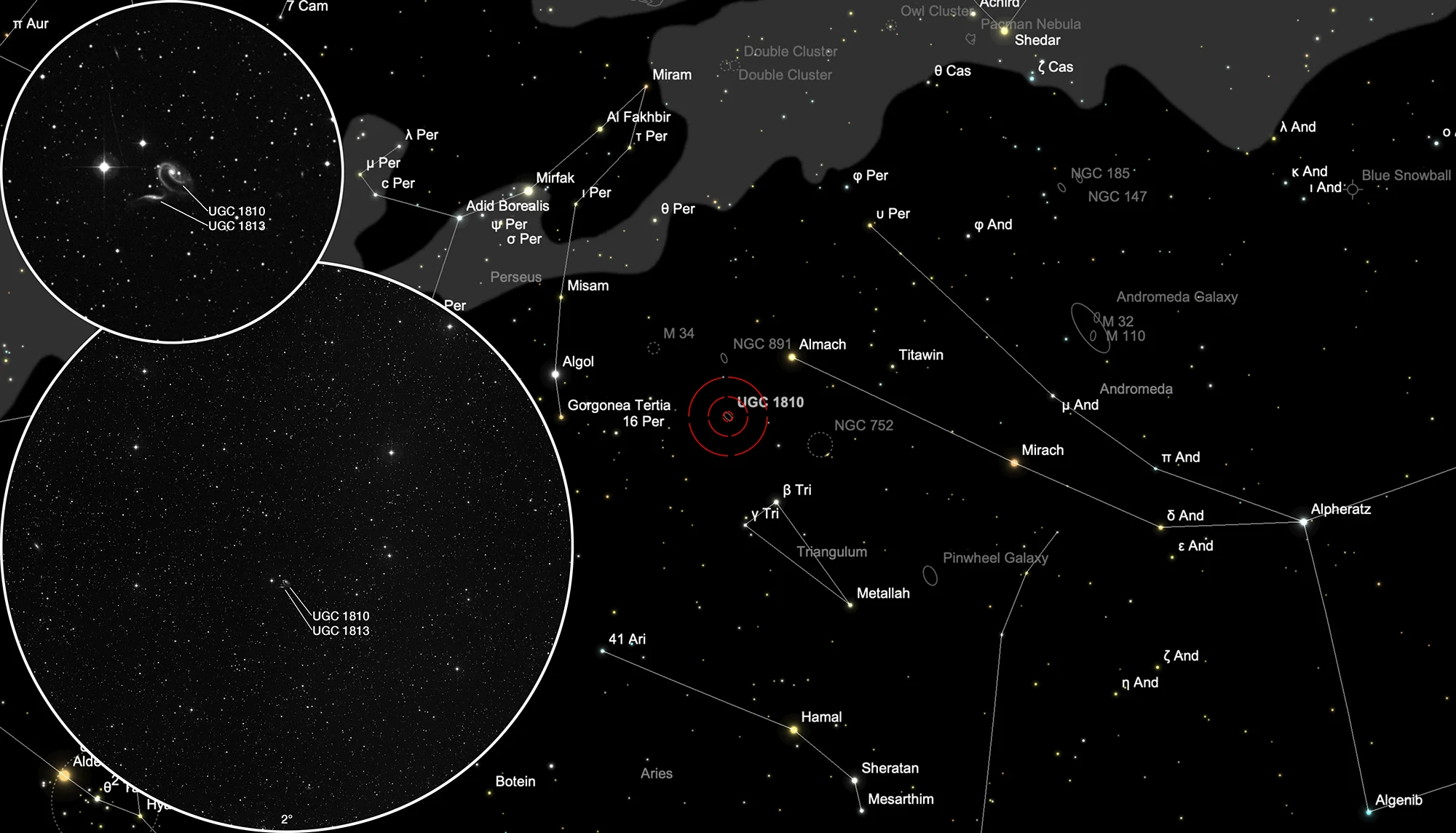Rose Galaxy (UGC 1810/3)

History
The pair of galaxies was most probably found in the 1950's by the Russian astronomer Boris Aleksandrovich Vorontsov-Velyaminov on the photo plates of the «Palomar Observatory Sky Survey». He listed it as VV 323 in his «Atlas and Catalogue of Interacting Galaxies», which was published in 1959. [432]
Halton Arp divided his «Atlas of Peculiar Galaxies», published in 1966, into groups based on purely morphological criteria. The pair of galaxies here received the designation Arp 273 (APG 273) as a pair of interacting galaxies. He noted: «Position of large spiral. Bright long well defined arms, but smooth, not patchy.»[199]

Physical Properties
UGC 1810 is the larger of the two spiral galaxies. It has an abnormal spiral structure that is tidally distorted by the gravitational tidal pull of the companion galaxy UGC 1813 south of it. The large, outer arm of UGC 1810 appears partially as a ring. This feature is seen when interacting galaxies actually pass through one another. The smaller galaxy dived off-centre through UGC 1810. The inner set of spiral arms is highly warped out of the plane. The blue patches in the north are the combined light from clusters of intensely bright and hot young blue stars, which glow intensively in ultraviolet light.
The smaller companion galaxy UGC 1813 can be seen nearly edge-on. It has a mass of about 20 percent of UGC 1810 and shows distinct signs of intense star formation at its nucleus, perhaps triggered by the encounter with the companion galaxy.
The distance is estimated to roughly 340 million light-years. [531]
| PGC | RA | Dec | Type | Dim | Btot | HRV | PA | Names |
|---|---|---|---|---|---|---|---|---|
| PGC 8961 | 02 21 28.8 | +39 22 32 | C M | 2.0 x 1.4 | 13.5 | 7551 | 50 | UGC 1810, MCG 6-6-23, CGCG 523-28, 5ZW 223, (VV 323), (ARP 273), ANON 218+39A |
| PGC 8970 | 02 21 32.5 | +39 21 24 | SB M | 1.3 x .4 | 15.2 | 7335 | 93 | UGC 1813, MCG 6-6-24, CGCG 523-29, (VV 323), (ARP 273), ANON 218+39B |
Finder Chart
The pair of galaxies is located in the constellation Andromeda. On 31 October it is in opposition to the Sun and culminates at local midnight. The best viewing time is June to March when it is highest at night.
